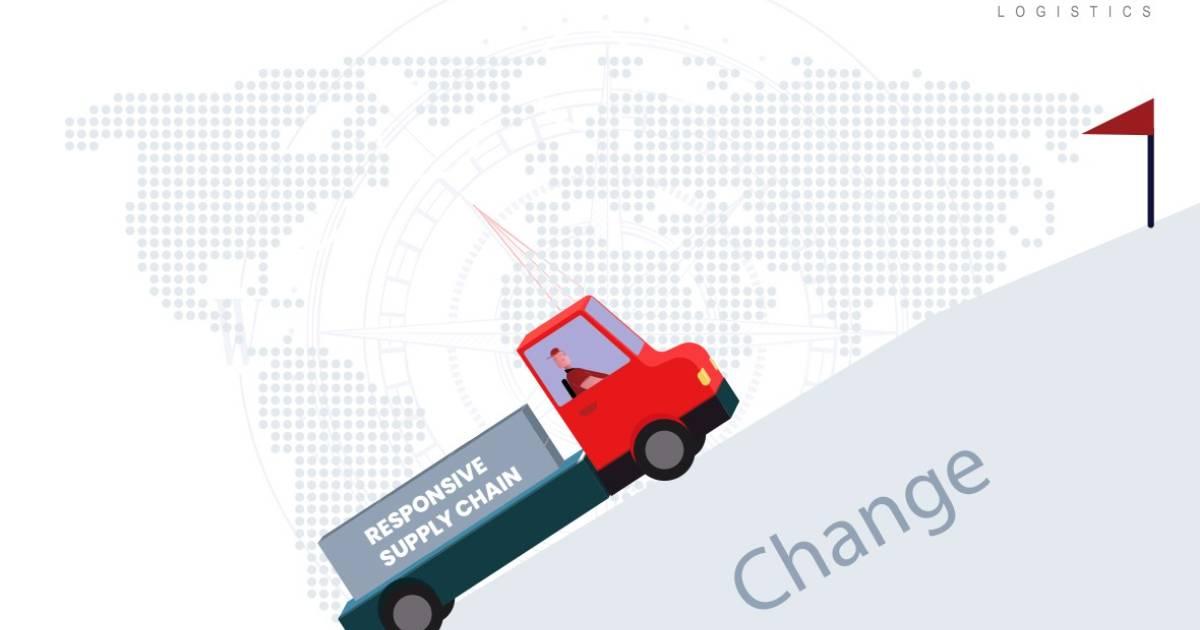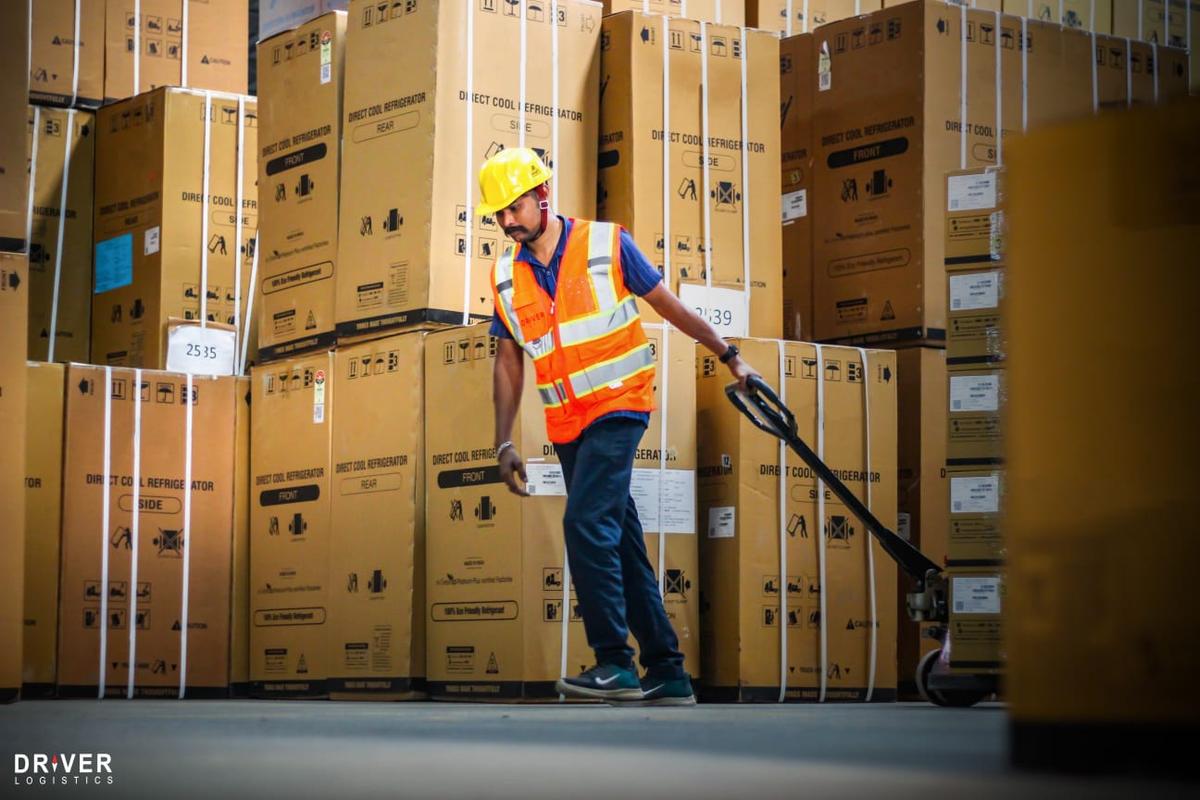
A Guide to Supply Chain Disruption: Major Types, Factors & Mitigation Strategies
Oct 9, 2023
Boosting supply chain efficiency is the ultimate goal of every business. But, we mostly fail in designing a disruption control strategy that helps to revive our business to normalcy after a setback. We never think about the possibility of supply chain risks while climbing the ladder of success. In most cases, we are unprepared to deal with sudden glitches in supply chain operations.
Developing a robust risk control strategy need of time. When the pandemic hit the world, the whole world lost its balance. The human power and industries were unprepared to deal with the pandemic. Even, The global supply chain was severely affected when the pandemic hit unprecedentedly. Though we cannot completely eliminate the risks, we can mitigate the consequences and impacts by implementing effective control measures.
Read More: 6 Effective Green Logistics Strategies Driven by Smart Technology
Types of Supply Chain Disruptions
Supply chain disruptions can be caused due to external and internal influences. It creates trouble for both businesses and customers alike. Identifying the types of supply chain disruptions is imperative to bring effective strategies to overcome business risks:
Product Demand Drop
The global supply chain faced a critical time during the pandemic. People were not active in purchasing. Moreover, continuous lockdown and social distancing affected supply flow severely. A lot of inventory stock is still loaded in warehouses across the country. Some were seasonal products, while some had only a limited shelf life. The sudden drop in demand caused unexpected financial loss and material damage. It's high time for supply chain leaders to adopt adequate measures to lessen the severity of damages.
Product Demand Surge
Product demand surge is the outcome of social conditions and tensions. There was a sudden increase in certain products amidst the COVID-19 outbreak. The panic shopping cleared off warehouse shelves, surprising manufacturers. Mostly, random surges are beyond predictions. It can have a huge impact on businesses, affecting its operational capability and supply chain bottom line. But still, planning an organizational strategy by understanding the volatility of the surge is necessary to prepare a control measure.
Lack of Productivity & Operational Efficiency
Synergizing the supply chain operations are crucial to ensure productivity. Operational failure in any of the sectors increases business risks. Sudden loss of labour force or equipment failures is enough to distract supply chain functions. When a pandemic or natural calamity occurs, there is always a shortage of employees. Even though you call back employees to restart your business, bringing them back to emotional and physical balance is a tough task. An alternative setup is indeed necessary to cope with sudden environmental and man-made changes.

Recommended Reading: Integrated Logistics and Supply chain coordination
Restrictions on Warehouse Occupancy
Storage access is an integral segment of every business. Proper storage facilitates qualified delivery. With the onset of the pandemic, many warehouses were shut down or limited in their activities, fearing contamination and viral infection. Similarly, man-made calamities like terrorist attacks or natural disasters like a flood can bring disruption to warehouse activities. Hence, planning an automated warehouse system that boosts productivity amid labour shortages or equipment failure is vital.
Raw Material Shortage
India's value chain is highly integrated into the global market. But, when a cross border tension occurs, businesses find it troublesome to obtain adequate resources. Our country heavily depended on China for raw materials indicating the fiscal benefits. But, when China became the epicentre of the pandemic outbreak, the borders were closed, disrupting the whole supply chain. So, there is a need to incorporate a local supply chain strategy to intensify internal resource flow.
5 Strategies to Disruption Control Activities
Companies need to prepare a mitigation plan that could help them to prepare for unprecedented eventualities. Here are some top-notch strategies that will help you to reduce the gravity of risks:
Implement PPRR Strategy
Maintaining business continuity is crucial when disruption occurs. Most companies with a successful track record, find a depleting graph after a calamity due to a lack of a potential backup plan. Implementing the PPRR method is a comprehensive strategy to secure your business amidst calamities. PPRR stands for: Prevention Involves measures taken to reduce risks of disruption Preparedness Includes strategies prepared, to implement during an emergency Response Stir up timely execution of the strategy to mitigate the risk factors Recovery Covers all measures taken to revitalize your business as soon as possible.
Go for Multi-Sourcing Model
Let it be raw materials supply or freight management, companies mostly rely on a single source for supply chain activities. It's high time to expand your business with more trustable partners whose services can be utilized even during a time of emergency. Diversifying the supply base with backup supplier lists can help you mitigate risks and restart your business without any operational struggles. Strengthen your core value chain by inculcating nearshore suppliers, alternative equipment facilitators, and labour force.
Improve Cyber Security and Control Threats
Even though AI-driven technology provides high-end opportunities and possibilities, businesses face cyber threats like hacking, phishing and malware issues. Implementing a cyber-attack defence mechanism is vital. Some of the significant defensive tactics include: -Framing a standard guideline for third-party users and vendors -Restricting visibility and access to your system by defining user goals -Training your employees on cyber protocols -Utilizing blockchain technology for centralized management and control of the entire activity -Building a test team for timely bug fixing

Increase Supply Chain Transparency
Integrating transparency in each level of operation helps you to inspect where you need improvement. Transparency can be achieved by collaborating with influential partners and utilizing neoteric technology. It reduces operational risks by helping you keep track of every event in a rapidly changing environment.
Optimize Freight for Better Performance
Decide with whom you want to share responsibility for the freight. It is always wise to partner with non-asset based logistics providers. Their industry knowledge and relationships will help you choose the best mode of transportation according to the need of the time. Moreover, keep a check on the following freight management metrics to ensure risk control measures:
Calculate the transit time and average stops and halts
Plan the route and track movement to navigate drivers through the possible risks Make sure your freight has undergone scheduled maintenance to prevent unnecessary disruptions
Include Risk Management Training Programme
You have a well-built strategy incorporated with trending technologies. But, what's the use if you don't have a trained labour force to implement them! It is essential to inform and train your employees on the grounds of security, productivity and risk management. Encourage your team to update their knowledge base and skills to mitigate risks and increase productivity.
Use Big Data to Pre-visualize Risk Scenarios
Data science and predictive analysis have brought brand new innovations in the supply chain sector to pre-analyse risk scenarios. This has also facilitated value chain leaders enough opportunities to frame analytic models to pre-determine risk scenarios and test drive the frequency of strategies in reducing the supply chain challenges. Moreover, organizing data is also crucial to ensure the proper operation of the supply chain. Business intelligence modalities have also enabled centralized data integration platforms to secure privacy and enhance easy access.
Relevant Reading: On-Demand Warehousing: Top Benefits & Use Cases To Enhance Your Business
Plan Your Mitigation Strategies to Strengthen Supply Chain
41.9% of businesses surveyed experienced between 1 to 5 supply chain incidents that ultimately, led to significant disruption. The most alarming figure, however, is that 22.6% of businesses surveyed were unaware of supply chain incidents that may have caused significant disruptions within their operations. Improving supply chain efficiency with adequate measures is necessary to combat risks. A slight disruption can damage the whole performance of your business. Smart planning and timely implementation can help businesses to control the impact of disruptions. A 3PL partner can help you design high-end supply chain measures for risk management. Framing a strategy is not an easy task for companies that have core internal operations and targets. Moreover, strategies differ depending upon the nature of the business. What is fit for one business may not be suitable for others. Customization of strategy is necessary to build a robust plan to secure supply chain performance from future risks.